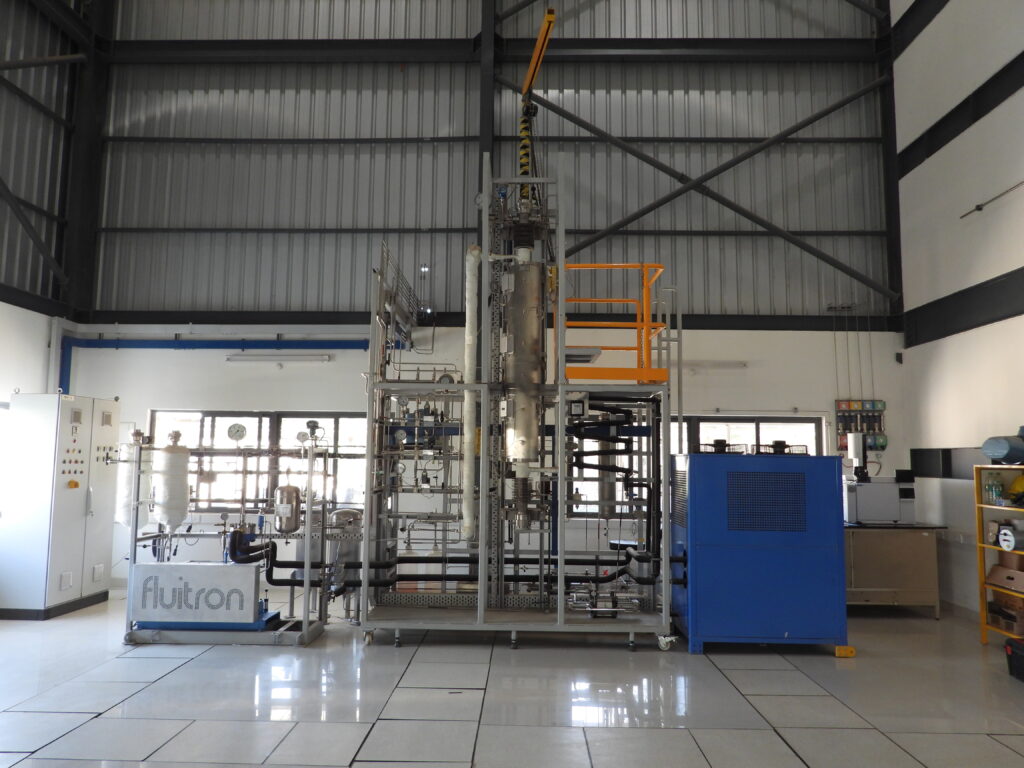Breathe Applied Sciences PVT LTD
Client Contact: Sebastian Peter, CO-Founder| www.breathesciences.com


Breathe Applied Sciences PVT LTD has developed a thermochemical CO2 reduction technology which was constructed, commissioned, and operated at the Jawaharlal Nehru Centre for Advanced Scientific Research (JNCASR). The verified technology utilized CO2 and H2 purchased in separate bottles, mixed onsite, and compressed before being fed to the Breathe methanol synthesis reactor. Breathe’s technology operates at high temperatures (250°C) and pressures (50 bar). Breathe uses a proprietary catalyst designed specifically to reduce CO2 to methanol with carbon monoxide (CO) as a by product.
The system demonstrated by Breathe was originally designed to handle a continuous feed of 283 kg/day of CO2, however, due to safety restrictions related to H2 storage onsite, the system was demonstrated at 1/10th capacity, with 1/10th of the catalyst loaded into the reactor and 1/10th the input feed rate of gases utilized during operation. The reactor was operated in a single-pass configuration, and no recycle of the tail gas was demonstrated. The liquid products are condensed from the gas phase and would need further refinement to achieve International Methanol Producers and Consumer Association (IMPCA) Quality standards.
350Solutions has verified the technology according to ISO 14034:2016 ETV and a technology specific verification plan. The objectives and approaches used for this verification were designed to apply these principles and processes to Breathe’s application for performance verification as presented under the NRG COSIA Carbon XPRIZE competition. The verification provides Breathe Applied Sciences and potential users of the technology with an independent assessment and verification of performance of the technology.
350Solutions verified Breathe’s technology according to specific parameters including: operational scale, CO2 embodied in product, methanol and CO production rate, CO2 conversion efficiency, H2 usage, energy usage, and water usage.
Technology Description
- Technology: Thermochemical Methanol Synthesis
- Technology Type: Thermochemical conversion of concentrated CO2 to methanol and CO
- Verification Date : June 22, 2021
Verified Performance Summary
- Operational Scale: 31.59kg CO2/day
- CO2 embedded in product: 8.88 kg CO2/day; 1.375 kg CO2/kg Methanol
-
Methanol production: 6.46 kg/day; 0.205 kg Methanol /kg CO2 input
CO Production: 2.18 kg/day - CO2 conversion efficiency: 39.06% input CO2 converted to methanol
- H2 usage: 4.34 kg/day; 0.67 kg/kg methanol
- Energy Usage: 50.16 kWh/day; 7.76 kWh/kg Methanol
- Water usage: 0 kg/day; 0 kg/kg methanol
